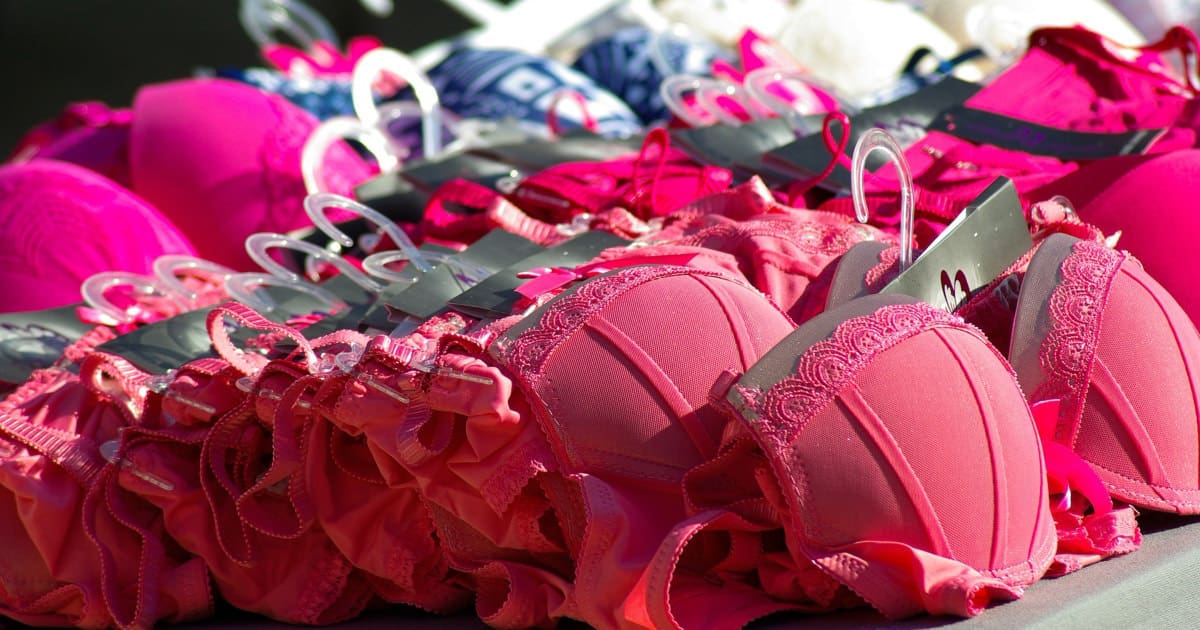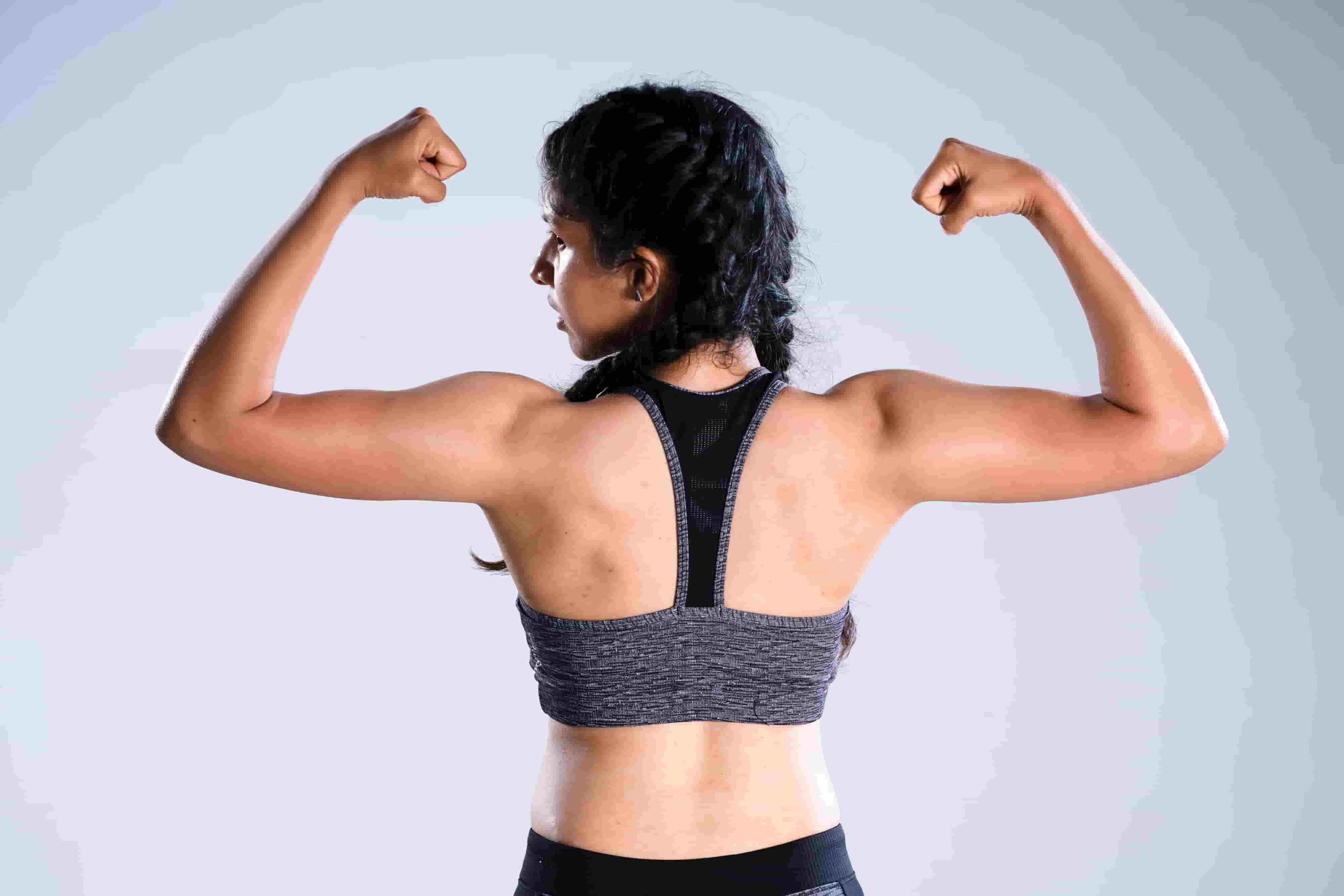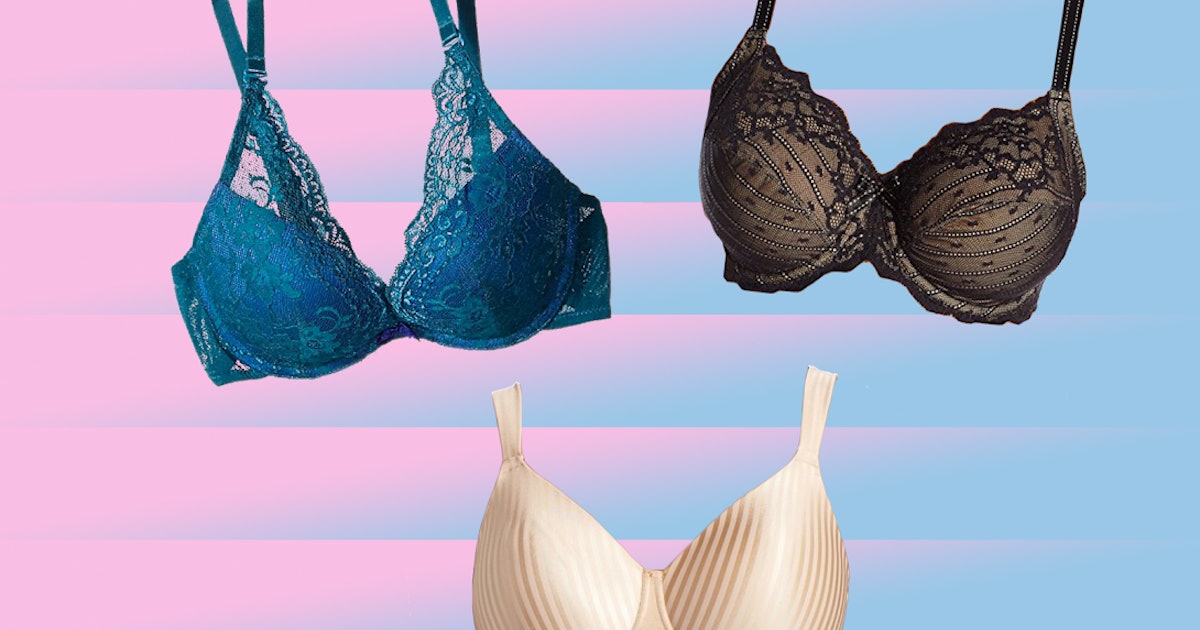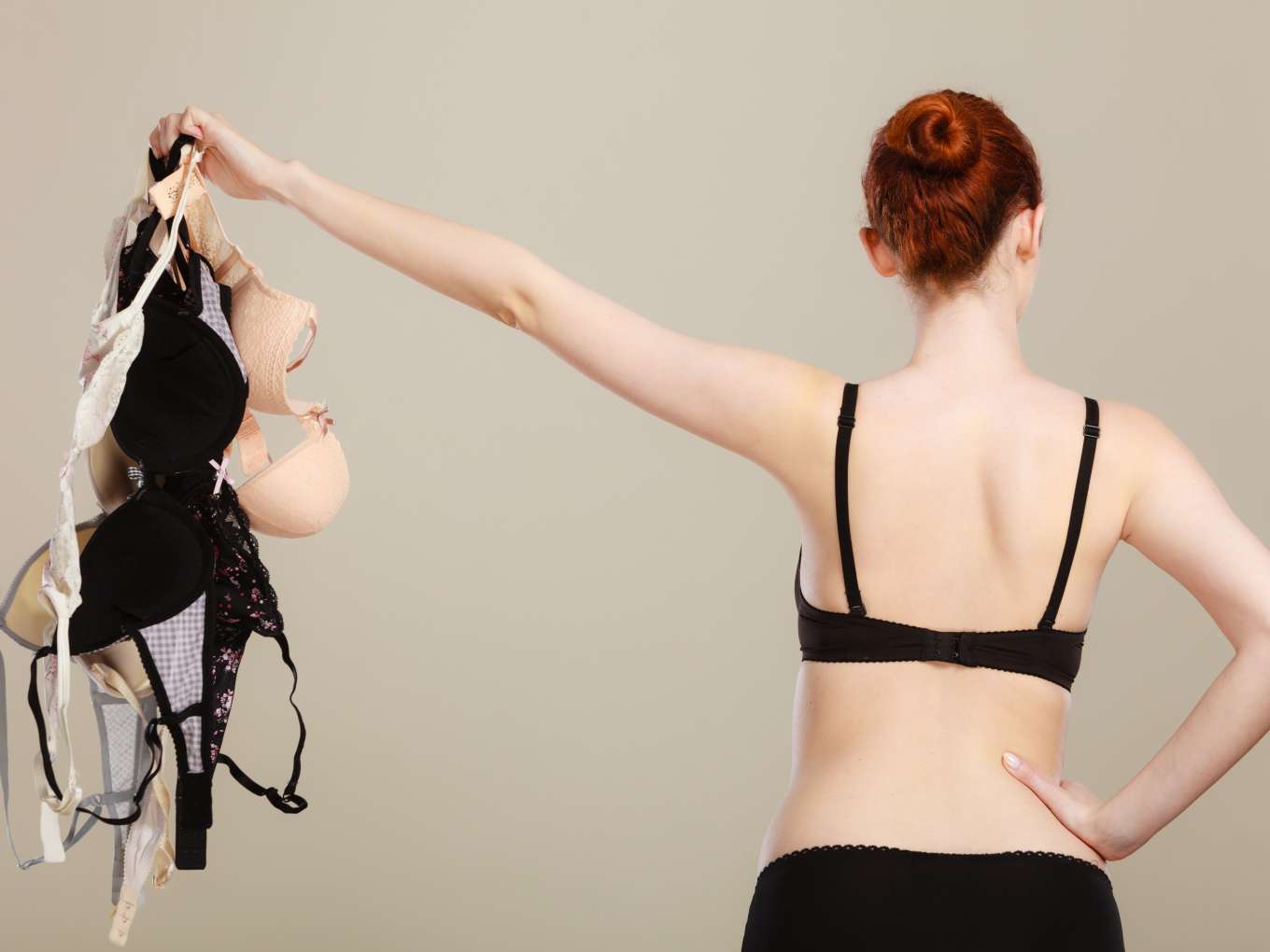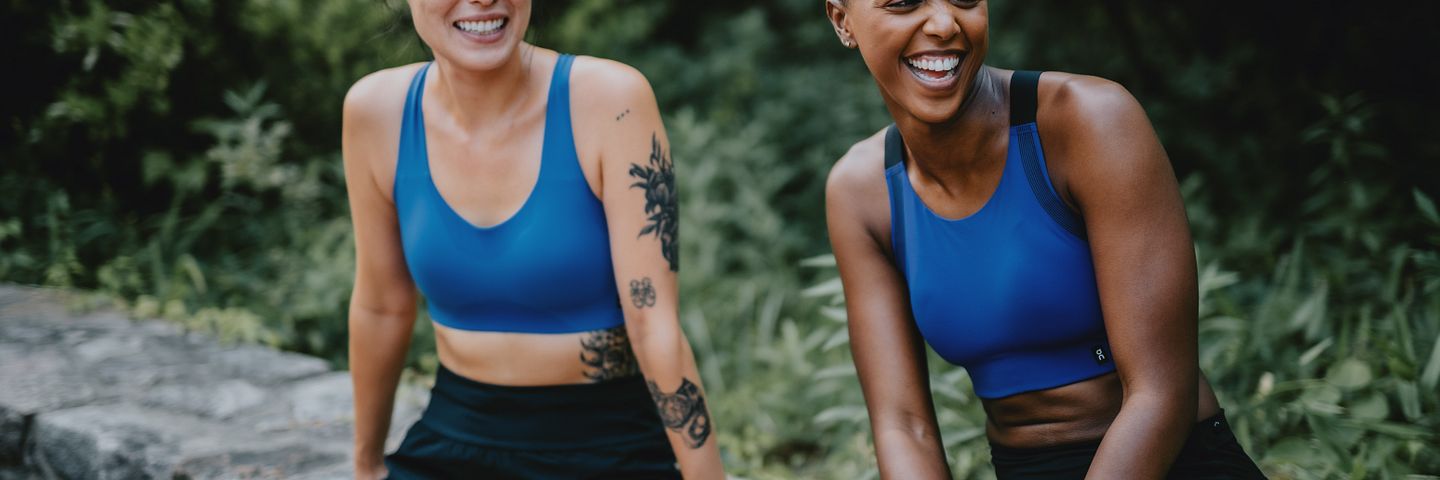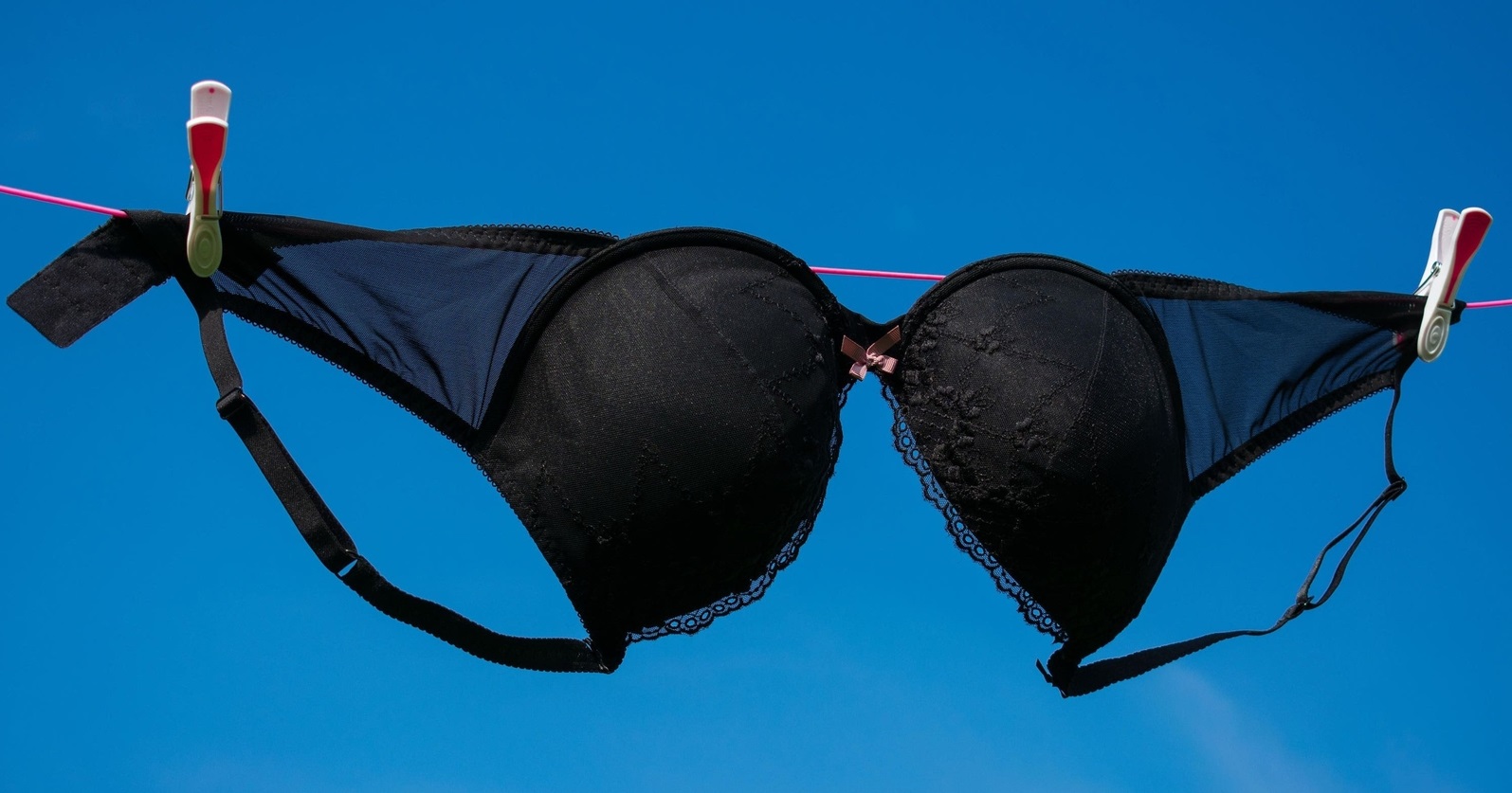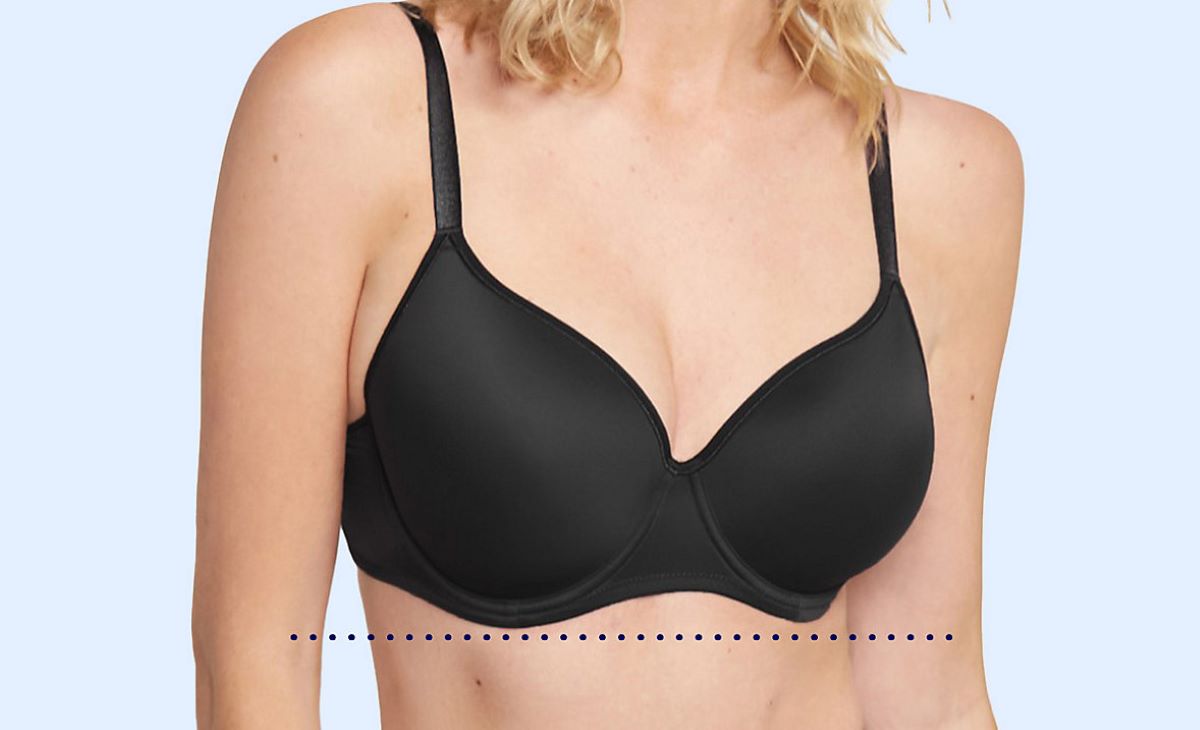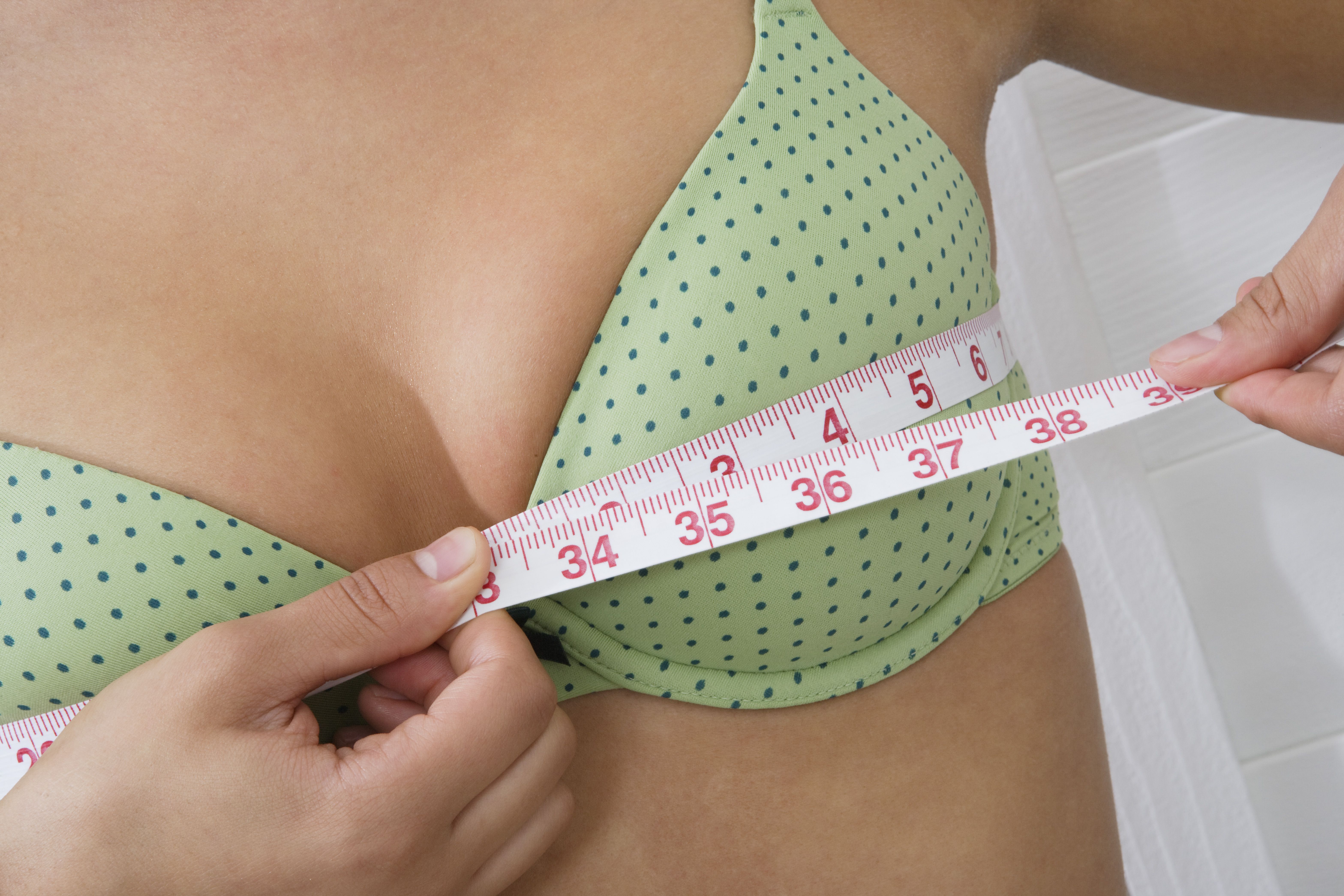Home>Buying Guides>How Should An Underwire Bra Fit
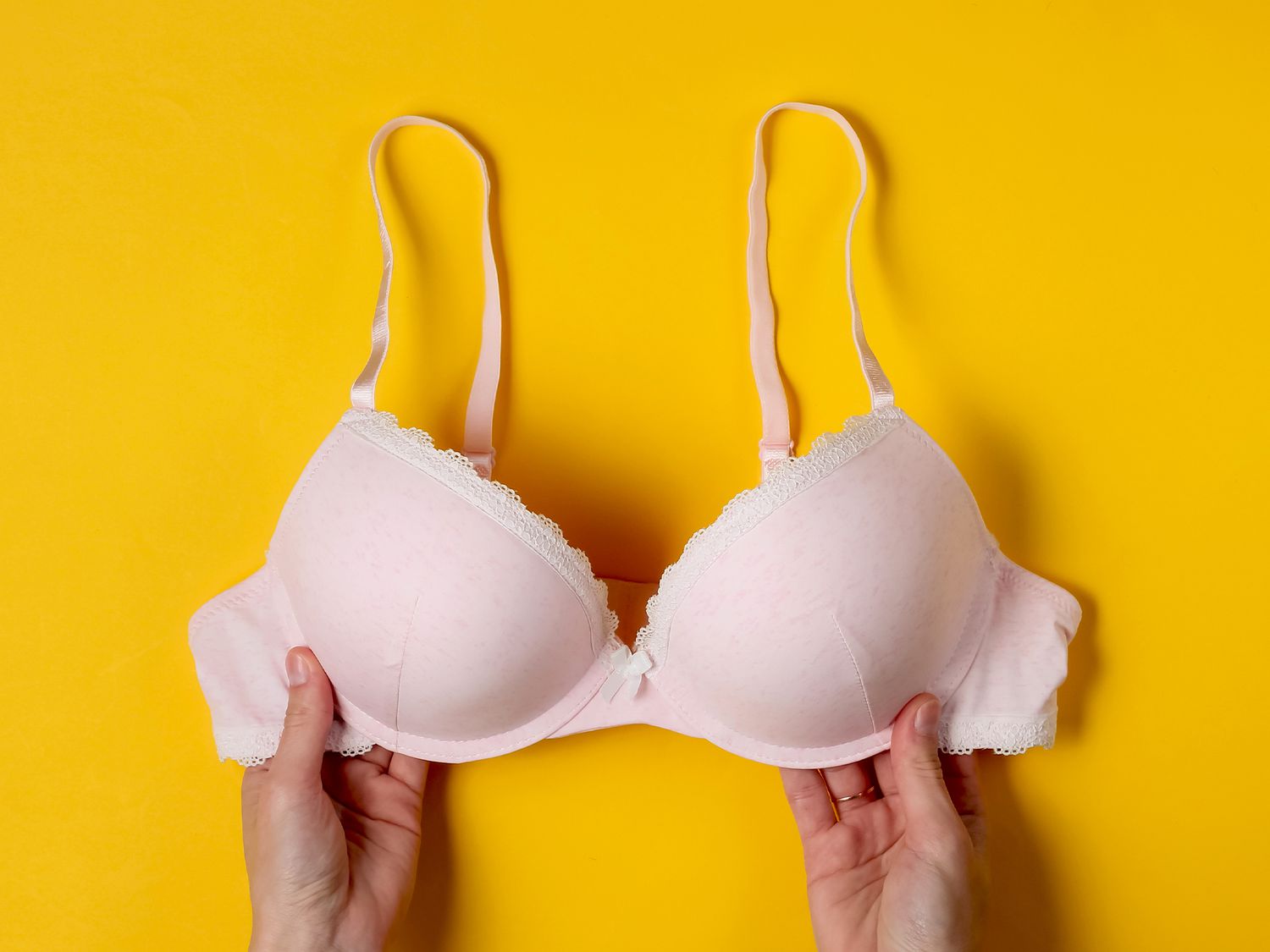

Buying Guides
How Should An Underwire Bra Fit
Modified: August 2, 2023
Discover the perfect fit for women's underwire bras. Learn how to ensure proper sizing and find a comfortable yet supportive fit that enhances your curves.
(Many of the links in this article redirect to a specific reviewed product. Your purchase of these products through affiliate links helps to generate commission for Under-tec.com, at no extra cost. Learn more)
Table of Contents
Introduction
When it comes to finding the perfect fit, underwire bras have become the go-to choice for many women. These bras offer exceptional support, shape, and lift, making them a popular option for everyday wear, special occasions, and everything in between.
However, the key to reaping the benefits of an underwire bra lies in finding the right fit. Ill-fitting underwire bras can cause discomfort, irritation, and even more serious issues like breast pain, red marks, or restricted movement. That’s why it is crucial to understand how an underwire bra should fit in order to experience optimal comfort and support.
In this article, we will walk you through the essential factors to consider when selecting and wearing an underwire bra. From band size to cup size, underwire position to strap fit, we will cover all the elements that contribute to a well-fitting underwire bra. By following these guidelines, you will be able to confidently choose underwire bras that provide both style and comfort.
Remember, the goal is not only to find a bra that fits, but one that makes you feel confident, supported, and comfortable throughout the day. So, let’s dive into the details and unlock the secrets of achieving the perfect fit with underwire bras.
Understanding Underwire Bras
Underwire bras are designed with a wire sewn into the fabric of the cups. The purpose of the underwire is to shape and lift the breasts, providing a more defined and flattering silhouette. This wire runs along the underside of the cups and follows the natural curve of the breasts, offering support and structure.
Contrary to popular belief, underwire bras are not solely reserved for women with larger bust sizes. They are available in a wide range of sizes and can provide benefits for women of all cup sizes. Whether you have a smaller or larger bust, an underwire bra can offer additional lift, shaping, and support.
It’s important to note that not all underwire bras are created equal. Manufacturers design them with various styles and features to accommodate different breast shapes and personal preferences. Some underwire bras have a demi-cup design, providing a lower neckline and less coverage, while others offer full coverage for maximum support and containment.
Understanding the various types of underwire bras available will help you make an informed decision when selecting the right one for you. Consider factors like the fabric, the shape of the cups, the style of the bra, and the specific features that align with your needs and preferences.
By understanding the different elements of underwire bras, you can narrow down your options and choose those that will provide the best fit and support for your unique body shape.
Finding the Right Band Size
When it comes to underwire bras, the band size plays a crucial role in providing optimal support and comfort. The band is the part of the bra that wraps around your torso, just below the bust.
To find the right band size, start by measuring your underbust. Use a soft measuring tape and wrap it around your body, directly under your bust, ensuring it’s snug but not too tight. Round the measurement to the nearest whole number.
Once you have your underbust measurement, you can determine your band size using the following guidelines:
1. If your underbust measurement is an even number, add 4 inches to get your band size. For example, if your underbust is 30 inches, your band size would be 34.
2. If your underbust measurement is an odd number, add 5 inches to get your band size. For example, if your underbust is 31 inches, your band size would be 36.
It’s important to note that these calculations serve as a starting point and may vary slightly depending on your body shape and personal preference. The goal is to find a band size that feels snug and secure without being overly tight or causing discomfort.
When trying on an underwire bra, make sure the band sits horizontally around your body and lies flat against your skin. It should feel firm and provide support without digging into your ribs or causing any bulges. You should be able to slide two fingers underneath the band comfortably.
If the band feels too loose, try going down a band size. Conversely, if the band feels too tight, consider going up a band size. Remember that cup size can also impact the band fit, so you may need to adjust both the band and cup sizes to achieve the perfect fit.
Having the right band size is the foundation for a well-fitting underwire bra. It not only provides the necessary support but also ensures that the underwire sits in the correct position and allows for a comfortable wearing experience throughout the day.
Ensuring Proper Cup Size
Alongside the band size, the cup size is equally important when it comes to finding the right fit for underwire bras. The cup size refers to the measurement of the bust and determines the amount of space and coverage the bra will provide for the breasts.
To determine your cup size, you need to measure the fullest part of your bust. Wrap the measuring tape around your chest and ensure it’s parallel to the ground. Make sure the tape is not too tight or too loose, as this can result in inaccurate measurements.
Once you have your bust measurement, subtract your underbust measurement (band size) from it. The difference between the two measurements will determine your cup size. Refer to the following guidelines:
- If the difference is less than 1 inch, you generally fall into the AA cup size.
- If the difference is 1 inch, you typically wear an A cup size.
- If the difference is 2 inches, you generally wear a B cup size.
- If the difference is 3 inches, you typically wear a C cup size.
- If the difference is 4 inches, you generally wear a D cup size.
- And so on…
Keep in mind that cup sizes can slightly vary depending on the brand and style of the bra. It’s advisable to try on bras in different (sister) sizes and styles to find the perfect fit for your shape and preferences.
When trying on an underwire bra, the cups should completely encase your breasts without causing any spillage or bulging. The underwire should follow the natural curve of your breasts and sit gently against your ribcage, without digging into the breast tissue.
If you find that the cups are too small, resulting in spillage or discomfort, try going up a cup size. Conversely, if you notice any gaps or excess fabric in the cups, consider trying a smaller cup size.
Finding the right cup size will ensure that your breasts are properly supported, lifted, and shaped. It will prevent sagging, improve your posture, and enhance your overall comfort while wearing an underwire bra.
Assessing the Underwire Position
One crucial aspect of ensuring proper fit and comfort in an underwire bra is assessing the position of the underwire itself. The underwire should align with the natural crease where your breasts meet your chest wall, also known as the inframammary fold.
When trying on an underwire bra, lift your arms slightly and check if the underwire sits snugly against your body in the inframammary fold. It should encircle the bottom and sides of your breast, providing support and lift. The underwire should not rest on any breast tissue or dig into your skin uncomfortably.
If you find that the underwire is sitting too low, not fully supporting the bottom of your breasts, or causing discomfort, you may need to adjust the cup size or try a different style or brand of bra. Conversely, if the underwire is poking or digging into your breast tissue, it may be a sign that the cup size is too small.
Keep in mind that slight variations in underwire position can occur due to differences in breast shape and body proportions. However, the goal is to ensure that the underwire is comfortably hugging the contours of your breasts while providing the desired lift and support.
It’s vital to take the time to adjust the bra and reposition the underwire as needed to achieve optimal comfort and fit. Remember, the underwire should be a support system, not a source of discomfort or pain.
By assessing the position of the underwire and making any necessary adjustments, you can guarantee that your underwire bra will offer the support and lift you desire, while keeping you comfortable and confident throughout the day.
Checking for Proper Centre Gore Fit
The center gore of an underwire bra is the small piece of fabric that sits between the cups and rests against your sternum. It plays a crucial role in providing stability, separation, and additional support to the breasts.
When trying on an underwire bra, it’s important to ensure that the center gore lies flat against your sternum and rests firmly against your body. It should sit flush against your skin without poking or digging into your breastbone.
If the center gore is lifting away from your body or not lying flat, it may indicate that the cup size is too small. Consider trying a larger cup size to allow the center gore to lay flat against your sternum. If the cups are too big, it could also cause the center gore to sit away from your body. In that case, try a smaller cup size.
The ideal fit for the center gore may also depend on your breast shape and the style of the bra. Some bras have a higher center gore, offering more coverage and support, while others have a lower center gore, providing a more plunging neckline. Choose the style that aligns with your preferences and provides the best fit for your unique body shape.
By checking for proper center gore fit, you can ensure that your underwire bra offers the necessary support, separation, and stability for your breasts. It not only enhances the aesthetic appearance by creating a natural and flattering shape but also contributes to a more comfortable and enjoyable wear throughout the day.
Evaluating Side and Back Coverage
When assessing the fit of an underwire bra, it is important to consider the side and back coverage as well. The side panels and back band of the bra play a significant role in providing support, stability, and a smooth silhouette.
Start by evaluating the side coverage of the bra. The side panels should encompass the entire side of your breasts, ensuring they are fully contained within the cups. If you notice any bulging or spillage, it may indicate that the cups are too small or that the side panels are not providing adequate coverage. In this case, consider trying a larger cup size or a bra with wider side panels to achieve a better fit.
Next, check the fit of the back band. The back band should sit horizontally across your back and feel snug without being overly tight. It should provide support and stability, without riding up or causing discomfort. If the back band is too loose, it will not offer the necessary support, and you may need to go down a band size. Conversely, if the back band feels too tight or digs into your skin, try going up a band size.
Another aspect to consider is the number of hook-and-eye closures on the back band. Most bras have multiple rows of closures, allowing you to adjust the band size slightly depending on your preference and the tightness of the bra. Start with the loosest setting and adjust as needed to find the most comfortable fit.
Evaluating the side and back coverage of the bra is crucial for achieving the optimal fit and ensuring that you feel secure and supported throughout the day. It also contributes to a smoother and more streamlined appearance under clothing.
Remember, the goal is to have a bra that offers adequate side and back coverage without causing any bulges, discomfort, or irritation. Taking the time to evaluate these areas will help you find the perfect underwire bra that provides the support, stability, and overall comfort you deserve.
Verifying Strap Fit
The straps of an underwire bra play a crucial role in providing additional support and lift to the breasts. It’s important to ensure that the straps are adjusted properly and fit comfortably on your shoulders to prevent discomfort and prevent the bra from sliding down or digging into your skin.
Start by adjusting the straps to a length that feels comfortable for you. They should not be too loose, as this can lead to insufficient support, nor too tight, as it can cause strain on your shoulders and dig into your skin. You should be able to fit two fingers comfortably between the strap and your shoulder for the optimal fit.
If you find that your straps are constantly slipping off your shoulders, consider tightening them or adjusting the strap length. If the straps are causing discomfort or leaving marks on your skin, try loosening them slightly. Everyone’s shoulders and body shape are different, so it’s important to find the strap length that works best for you.
It’s also worth noting the width of the bra straps. Wider straps tend to distribute the weight more evenly and can offer more comfort and support. If you have a larger bust, you may find that bras with wider and padded straps provide enhanced comfort and prevent shoulder strain.
Additionally, some underwire bras offer the option to convert the straps to different styles, such as racerback or cross-back. This can be beneficial if you want to wear a bra with more versatility or need additional support for specific outfits. Experiment with different strap styles to find the one that offers the best fit, support, and comfort for your needs.
Verifying strap fit is an essential step in ensuring that your underwire bra provides the necessary support and comfort. Properly adjusted and fitted straps will help maintain the position of the bra, prevent slippage, and enhance your overall comfort and confidence throughout the day.
Assessing Overall Comfort
While finding the right size and fit is essential, it’s equally important to assess the overall comfort of the underwire bra. Comfort is subjective and can vary from person to person. What feels comfortable for one individual may not be the same for another.
When trying on an underwire bra, pay attention to how it feels against your skin throughout the day. Consider the following factors:
1. Fabric: The fabric of the bra should feel soft, breathable, and gentle against your skin. It should not cause any irritation or itchiness, especially if you have sensitive skin.
2. Underwire: The underwire should be flexible and follow the natural shape of your breasts without causing any discomfort or poking. It should sit snugly against your ribcage without digging into your breast tissue.
3. Cups: The cups should provide adequate coverage, support, and shaping without causing any spillage, gaps, or flattening. They should feel comfortable and conform to the natural contours of your breasts.
4. Straps: The straps should feel secure, supportive, and properly adjusted for your shoulders. They should not dig into your skin or slip off your shoulders frequently. Finding the right strap width and style can also impact comfort.
5. Band: The band should fit snugly around your torso without feeling too tight or restrictive. It should provide support and stability without riding up or causing any discomfort.
Ultimately, the comfort of an underwire bra is highly individual and may require some trial and error to find the perfect fit. It’s important to listen to your body and make adjustments as necessary. If you’re experiencing significant discomfort or pain, it may be a sign that the bra is not the right size or style for you.
Remember, wearing a comfortable underwire bra is not only about physical comfort but also about feeling confident and supported. Don’t hesitate to explore different brands, styles, and sizes until you find the underwire bra that ticks all the boxes for you in terms of comfort.
By assessing the overall comfort and making adjustments as needed, you can find an underwire bra that not only fits well but also feels great, allowing you to go about your day with ease and confidence.
Conclusion
Finding the perfect fit in an underwire bra is crucial for comfort, support, and confidence. By understanding the key factors to consider and following the guidelines outlined in this article, you can navigate the process of selecting and wearing underwire bras with ease.
Start by accurately determining your band and cup size, ensuring that the underwire rests in the correct position and the center gore fits flat against your sternum. Evaluate the side and back coverage, verifying that the straps are adjusted properly for a comfortable fit. Finally, assess the overall comfort of the bra, paying attention to the fabric, underwire, cups, straps, and band.
Remember, finding the right underwire bra is a personal journey and may require some trial and error. It’s essential to listen to your body and make adjustments along the way. Don’t be afraid to explore different brands, styles, and sizes until you find the underwire bra that provides both comfort and support.
An underwire bra that fits well not only enhances your appearance but also contributes to your overall well-being and confidence. When you feel comfortable and supported, you can go about your day with ease and radiate confidence in every step.
So, take the time to find the underwire bras that make you feel amazing, supported, and comfortable. Embrace the power of a well-fitting underwire bra and enjoy the benefits it brings to your daily life.

